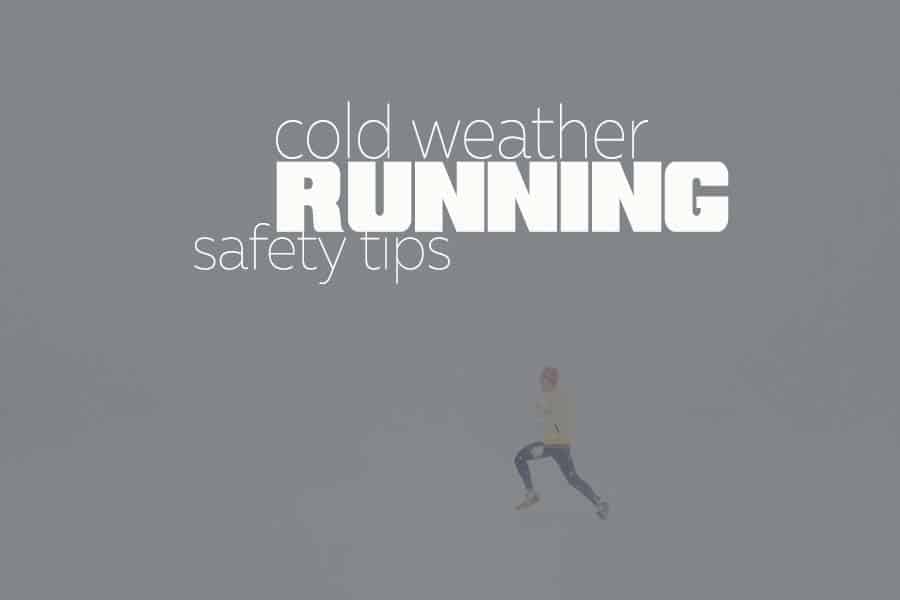Running in cold or winter conditions is by no means an easy task. If you live in an area full of snow the area that you live in may not even plow the sidewalks properly and it can be very difficult to find an area that you can run. Once you do find a good area to run it can be hard to determine when the best time of day is and what sorts of things you should wear when you are going on your run. Dressing for the weather is important but you don’t want to wear something that is so heavy that you can’t properly run when wearing it. There are some things that you can do to help, but first of all let’s get into the science behind running in the cold and what makes this task so difficult.
When you run in the cold your body needs more oxygen in order to perform. Running in the cold causes your muscles to produce more lactate which in turn makes you wear out faster on your run. In the cold, your muscles are not as capable of contraction and this results in the use of more muscle fiber as well. It is also often speculated that the increase in the body’s metabolism in order to cope with the cold temperatures also assists in making your body wear out faster in cold weather.
Adequate Footwear
In order to be able to properly run in winter conditions the first thing that you should look for is a good pair of running shoes and warm pair of socks. You are going to want something that isn’t made out of a mesh-like material so that your feet don’t get cold while you are running. You will also want to make sure that the shoes are both comfortable on your feet and that there is a good amount of tread on the shoes so that you can run in slippery conditions. It is important that your shoes are still fairly lightweight so that you can run at a fast pace as well, which is another thing that you should keep in mind when you are searching around. It is definitely important to consider the types of environmental conditions in which you’ll be running since the winter or cold season will often throw you a broad range of temperature changes that can cause the ground to become quite wet and muddy. Getting yourself something with closed toes or something that has a higher heel on the shoe can help to protect you from the elements. You won’t need this kind of protection in every geographical region around the country, but you should always keep these kinds of things in the back of your mind when you are making a purchase decision. No matter the kind of shoe that you end up buying just make sure that it has proper arch support and that it is going to be comfortable to wear for a long period of time.
Hand & Face Temperature Protections
The next important thing to do is dress for the weather. If it is a blizzard outside you should probably put on some kind of a face mask in order to protect you from getting frostbite. Something such as a ski mask could work or you could always wrap a scarf around your head. It is important to wear a sweater or a light coat so that you don’t overheat while you are running and so that you don’t freeze. In the wintertime, most runners prefer to wear track pants or splash pants that are coated in order to provide protection from the wind. One other thing that you should consider wearing is a pair of finger mitts or gloves so that your hands stay warm while you are running; many runners like to put hand warmers inside of their mitts as it helps to warm up your body temperature throughout the duration of your run.
Ensure Visibility
In order to remain safe while you are out on the road or in a high traffic area, it is important that you remain visible other people. If you are out driving in a snowstorm or you are running late at night or early in the morning it can make you hard to spot. It is always a good idea to buy a reflective vest or a reflective coat so that you can be properly seen from a distance and avoid accidents. If you don’t want to buy a reflective vest it is best to wear colors as bright as possible, and you could also consider running with a flashlight if it is in the early morning or late at night.
Hydration
Depending on the length of the run that you are planning on going for it is important to consider how you are going to maintain proper hydration throughout the length of your run. If you are dressing light for the weather and you are going to be outside for a while, one option that you have is what temperature you want your water to be. Traditionally you may think that cold water is the best, but if you are dressing light or you are going to be drinking your water much later in the day, filling your bottle up with hot water is going to make the bottle last for a longer period of time without freezing up on you and not allowing you to drink its contents. This is definitely something that you should consider on really cold days or days when you know you are going to be out in the cold for an extended period of time.
If you are sensitive to the cold or you have a lot of allergies, one thing to consider when running is to wear a mask. Many people who run outdoors in the winter like to wear a mask on their face as it helps to prevent a symptom called bronchial spasms which can slow down air from entering the lungs and cause you to wear down faster. By wearing a mask, the cold air passes through the mask and warms up a bit before it enters into your lungs; not to mention if there is a lot of pollen or other compounds in the air to which you are allergic, then a mask is a great solution so that you don’t have an allergic reaction in the middle of your run.
If you find that it is too icy outside in order to be able to run without the risk of falling, there are actually strap-on metal spikes that you can buy for your shoes so that you won’t fall as easily. It is important to make sure that your shoes are done up properly so that you don’t fall over as a result of a loose shoelace as well. Running on ice is never as safe as running on bare pavement so just keep that in mind when you are trying to set a new record for yourself as all it takes is one slip to put you out of commission for a really long time.
Stretching & Warming Up
Due to the fact that your muscles don’t contract as well in cold weather, it is extremely important to make sure that you stretch out well before you go for a run so that you don’t end up cramping up in the middle of your run. Stretching helps to increase blood flow to your muscles and gets them warmed up and ready to be used, it is a great way to prevent injury from occurring and improve your overall performance.
To sum everything up it is important to make sure that you wear the proper clothing in order to match the temperature as well as the weather conditions. If you have snow in your area it is important to find yourself a safe place to run and it is important to check the ground conditions before you start out so that you can set a reasonable pace for yourself and avoid an injury. Remember that there are options for you if you don’t have the proper tread on your shoes and remember to stretch before you start out so that your muscles are warmed up and ready to go. If you are going to be running in a busy area, make sure that you will be visible to other people by either wearing reflective clothing or something with bright colors so that you don’t have to worry as much about an accident occurring. Best of luck with your cold running conditions and happy training!

